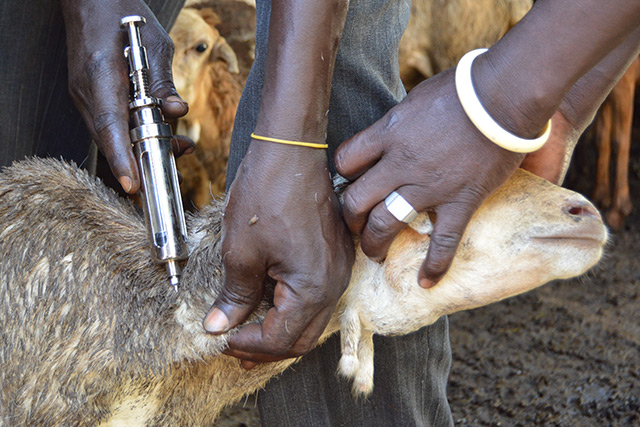

The following are guidelines for the correct procedures to follow when inoculating your animals.
Before vaccinating your animals, carefully read the user instructions on the package insert of the vaccine, and use the medicine only as instructed and prescribed. Take note of the warnings on the package insert. For example, immunising an in-calf cow against brucellosis (Strain 19 vaccine) could cause her to abort.
Before vaccinating, boil syringes and needles in water for at least 15 minutes in order to sterilise them. Never use a disinfectant or methylated spirits. If possible, use a separate needle for each animal as injecting more than one animal with the same needle could result in a transfer of disease-causing viruses or bacteria from an infected animal to a healthy animal.
Shake the vaccine bottle each time before filling the syringe. Any vaccine prepared by adding a freeze-dried material (pellet) to water must be injected immediately after preparation. It cannot be stored.
As heat damages or destroys the active agents in the vaccine, keep the vaccine cool during transport and use. Store the vaccine in a cooler box with ice packs for this purpose. Remember that heat damages all vaccines, and this could result in a less effective product.
Do not mix different vaccines, such as those for lumpy skin disease and blackquarter, in the same syringe, and never mix vaccines with other agents such as antibiotic, vitamins or deworming substances.
If administering more than one vaccine at a time, do not inject them in close proximity to each other. Ensure that each is injected in a different location on the same animal, such as on opposite sides of the neck.
Vaccinating animals during a disease outbreak will not immediately stop the spread of the disease as it takes 2-3 weeks for immunity to develop. Therefore, an animal immunised during the disease incubation period will still contract the disease. During an outbreak, immunise every animal with a separate, sterile needle. Never vaccinate a calf or lamb or its mother before it reaches 10 weeks of age. Immunity derived from its mother’s colostrum will protect the lamb or calf, unless stated otherwise in the package insert.
In consultation with your veterinarian, compile an animal health management programme for your farm. Remember to regularly update this programme according to any new risks identified by you or your animal health practitioner.
 Contact Jaguza Support
Contact Jaguza Support